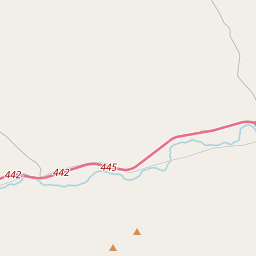Old Bear Creek Texas Ranger Camp
Historical marker location:






Established October 1877 as patrol base for Co. E, Frontier Battalion, Texas Rangers, on the lookout for Indians and outlaws along the Llano River. Area was popular refuge for cattle and horse thieves, murderers, mail robbers-- and within a few weeks many were captured by the unit of 30 men commanded by Lt. N. O. Reynolds. The Rangers in 1878 helped fight off one of the last Indian raids in the area.
Ranger protection given from this camp (used until mid-1880s) opened the way for peaceful settlement in Kimble and nearby counties
As one of the most visible programs of the Texas Historical Commission (THC), historical markers commemorate diverse topics in Texas history, including: the history and architecture of houses, commercial and public buildings, religious congregations, and military sites; events that changed the course of local and state history; and individuals who have made lasting contributions to the state, community organizations, and businesses.
The state of Texas was once an independent country known as the Republic of Texas. It gained independence from Mexico in 1836 and was a separate nation until it was annexed by the United States in 1845.
The county was officially organized in 1876 and named after George C. Kimble, a famous Texan who fought in the Texas Revolution. During the late 19th and early 20th centuries, Kimble County experienced a period of growth and development. Railroads were built, connecting the county to other parts of Texas, which facilitated the transportation of goods and people.
The discovery of silver and lead in the county drew even more people to the area, resulting in the establishment of several mining communities. For a time, the county was a hub of mining activity, greatly contributing to its economic prosperity. However, as the mining industry declined in the early 20th century, the county shifted its focus to agriculture and ranching.
Today, Kimble County continues to embrace its rural character and agricultural heritage. It is known for its picturesque landscapes, including the beautiful South Llano River State Park. The county's economy is primarily driven by agriculture, including livestock, hunting, and pecan farming. With its combination of natural beauty, historical significance, and thriving rural lifestyle, Kimble County remains a charming part of Texas.
Kimble County Timeline
This timeline provides a glimpse into the major events and milestones that have shaped the history of Kimble County, Texas.
- 1850: Kimble County is created from parts of Bexar, Gillespie, and Mason counties.
- 1869: The town of Kimbleville is established as the county seat.
- 1873: The name of Kimbleville is changed to Junction City.
- 1882: The town is officially incorporated as Junction City.
- 1894: The name of Junction City is changed to Junction.
- 1901: The Kansas City, Mexico and Orient Railway reaches Junction, leading to an increase in population and economic growth.
- 1927: A devastating flood hits Junction, causing significant damage to the town.
- 1949: The county seat is moved from Junction to its current location in Junction City.
- 2001: The Kimble County Historical Museum opens in Junction to preserve the county's history.